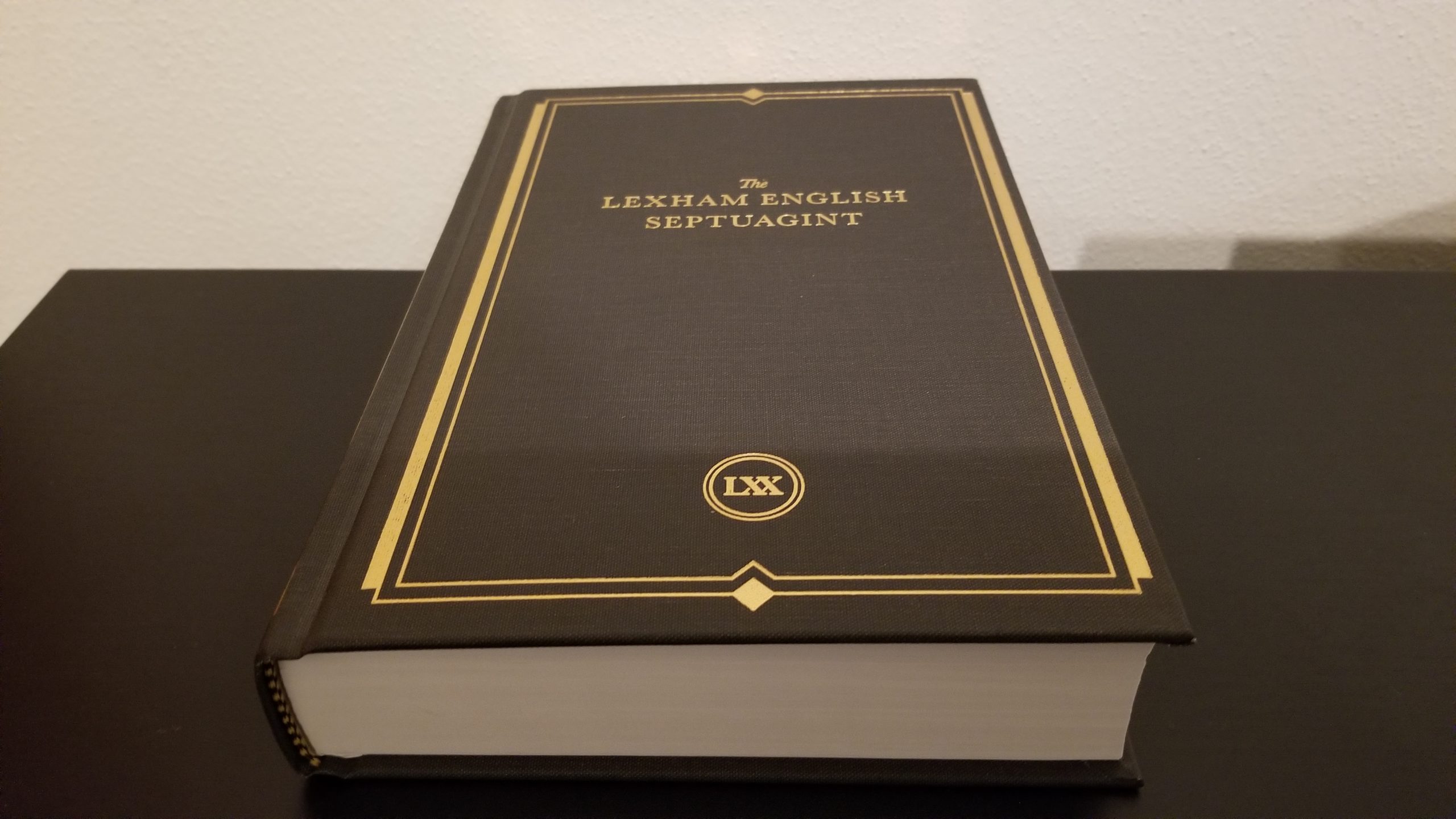
Back in mid-January, I posted about the brand new publication of the Lexham English Septuagint, (LES) second edition. As mentioned in that post, Lexham Press is the publishing imprint of Faithlife Corporation, which produces the well-known Logos Bible Software. This English translation of the Septuagint (essentially, the Greek Old Testament, which was used widely by the early church) grew out of an interlinear Greek/English edition that was available in Logos. The highly literal interlinear English text was rearranged into semi-readable form by software, and then it was comprehensively edited by a team of scholars under the direction of Dr. Ken Penner of St. Francis Xavier University in Canada. The first edition of the resulting translation was available only in Logos software. The text was revised again for this second edition, and it is being printed in physical form for the first time. Many thanks to Lexham Press for providing me a copy to review!
The book measures 6.25 X 9.25 X 1.5 inches. This is very similar in size to the New Living Translation – Catholic Edition (NLT-CE) which was published by Tyndale in the US in 2018:
I’m pleasantly surprised at the manageable size of this book. The marketing images that were released by Lexham Press made me think it would be thicker, but the thickness is certainly nothing to worry about in person. This is a book that can be read in-hand for a decent time without fatigue.
The opening pages contain a very informative introduction, which explains the translation philosophy and differentiates this translation from others in recent history, notably the New English Translation of the Septuagint (NETS). One of the most important differences between them is that the NETS translates the critical text of the Septuagint, which is a scholarly reconstruction of what the original translators of the Septuagint (from Hebrew to Greek) wrote, while the Lexham English Septuagint translates H. B. Swete’s diplomatic text of the Septuagint. A diplomatic text reproduces a single manuscript of the original, with supplemental material only used where the primary manuscript is missing material. Swete’s Septuagint is primarily drawn from Codex Vaticanus which dates to the 4th century AD. Diplomatic texts are closer to what Christians in the early church would have read, while the critical text is a theoretical reconstruction of an original that did not exist for the early church.
The translators also tried to preserve some of the flavor of the original Greek in their translation. They did not smooth out awkward grammar or make the text read better in English than it does in Greek. I admire this commitment to bringing English readers close to what the Greek is like. It does make for difficult reading in some places, though, where the meaning is hard to understand, or where familiar passages from other translations sound strange and foreign. Consider the following passage from Psalm 139 (Psalm 138 in the Septuagint numbering):
My bones were not hidden from you,
Psalm 138:16-18 LES
which you made in secret,
and my actual being
was in the lower parts of the earth.
Your eyes saw my unformed shape,
and in your document all will be written,
for days they will be formed,
and none in them.
But for me your friends were exceedingly honored, O God;
their rulers were exceedingly strengthened.
I will count them,
and they will be multiplied beyond the sand.
I was awakened,
and still I am with you.
The book features a very nice textured hardcover with gold designs and lettering. The pages are not gilded, and the binding is glued, not sewn. The text is line-matched, so ghosting of text from subsequent pages is not overly distracting. The text is also printed in single-column format, making the poetry sections especially enjoyable to read.
In the narrative sections, the text looks tightly packed to me, but when I compare it to other bibles, I realize that the LES features more comfortable line-spacing. The text is also notably larger than the 8-point font in my Cambridge REB with Apocrypha. Here is a photo of the two side-by-side:
Overall, this is a beautifully typeset edition with a nicely designed cover. At a list price of $39.99, I would prefer to see a sewn binding, but aside from that, this is a useful reference for anyone who is interested in the Septuagint. It retains common names for the books and people of the Old Testament, rather than reverting to the names from the Greek (for example, it uses 1 and 2 Chronicles instead of the books of Paralipomenon). This makes the LES much more approachable to modern readers who are familiar with translations of the Hebrew Bible as compared with the New English Translation of the Septuagint.
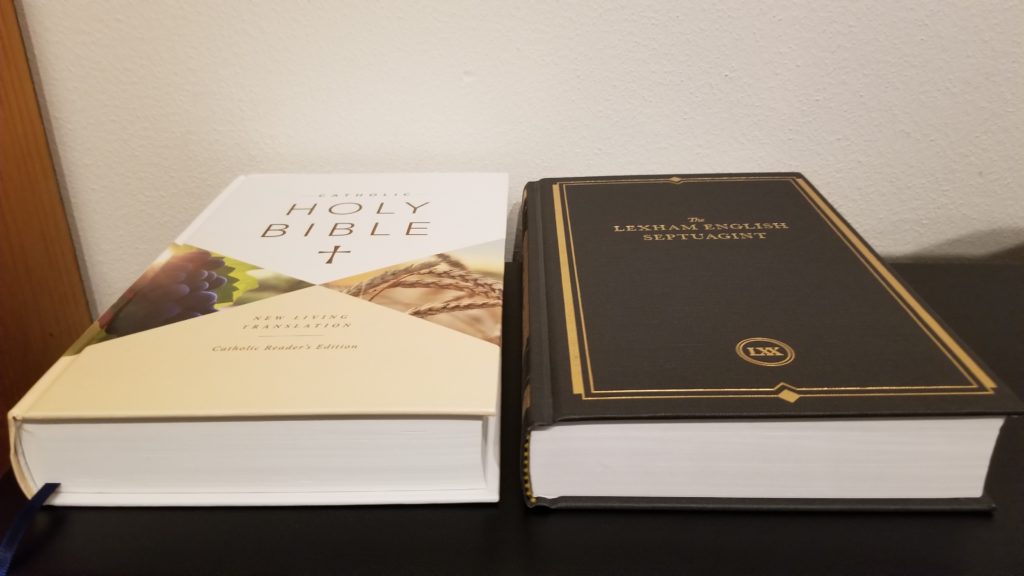
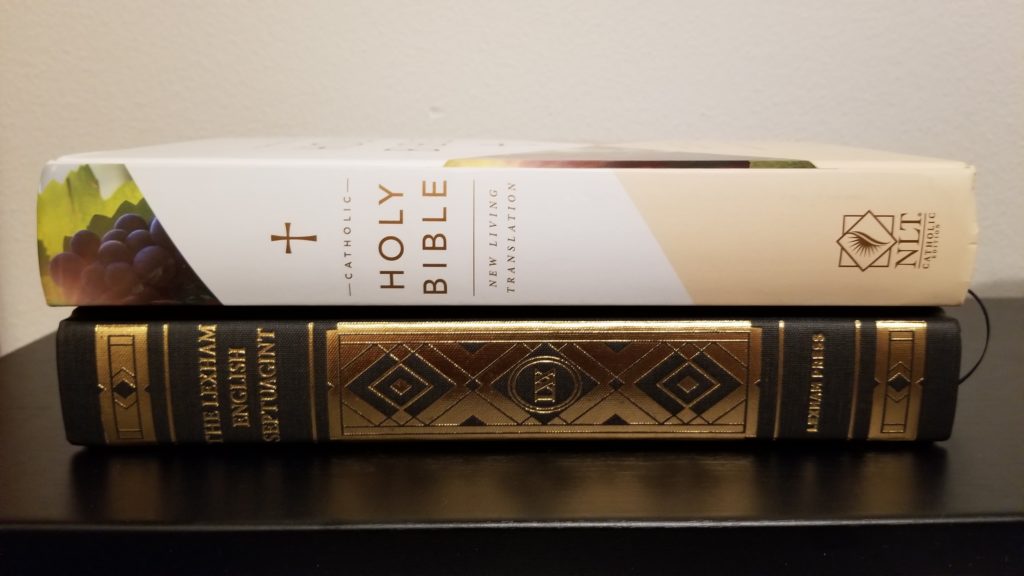
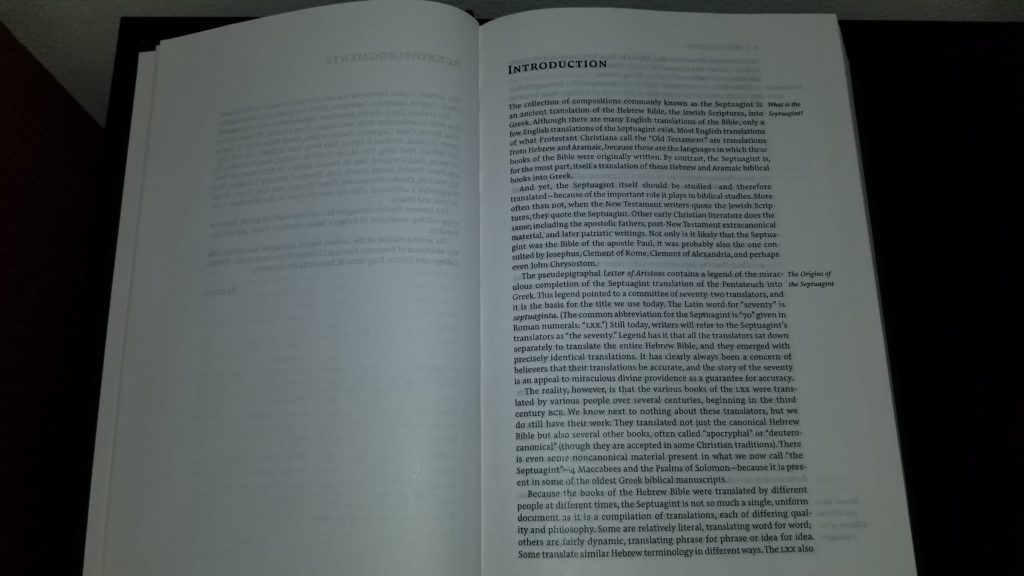
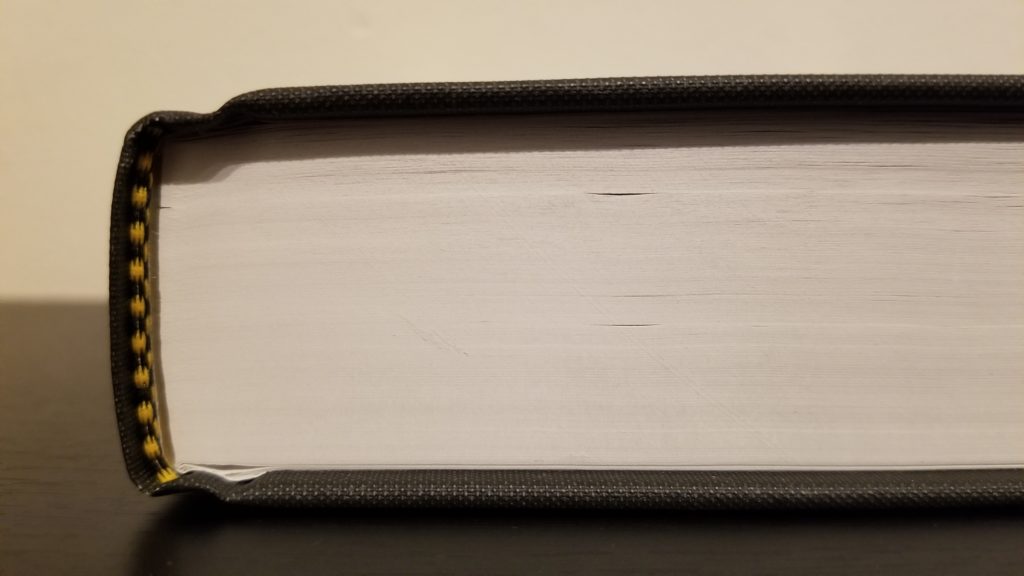
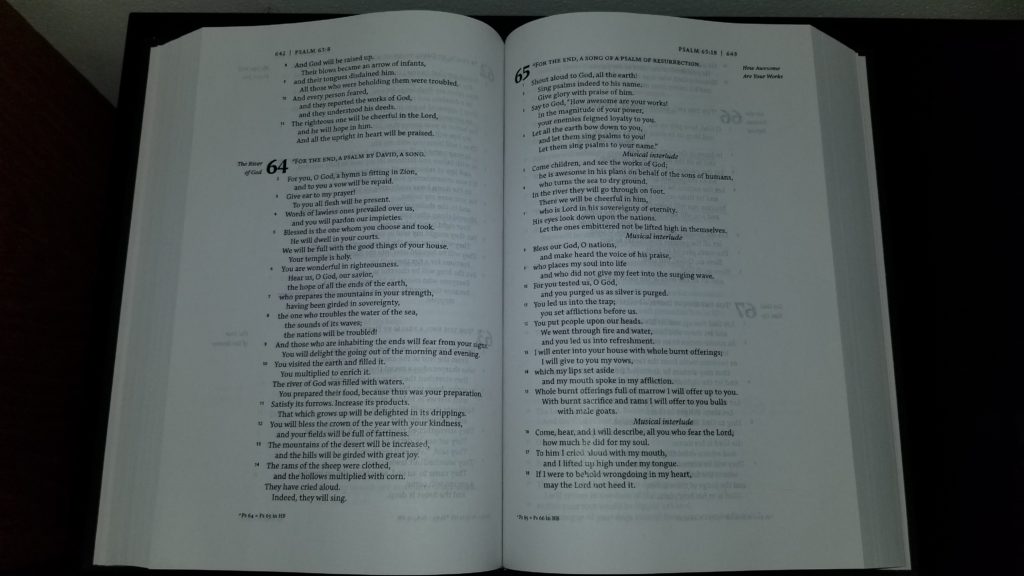
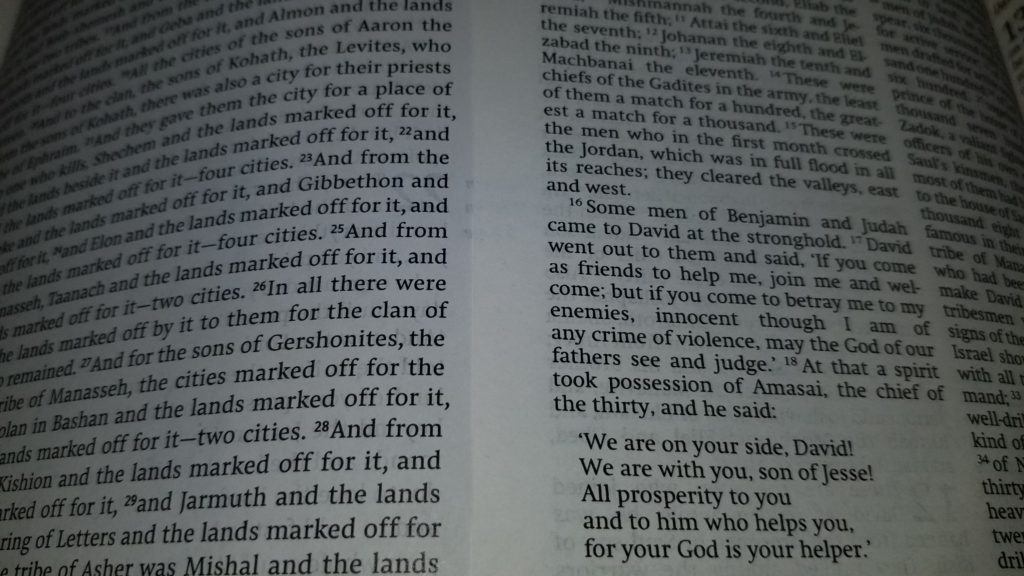
I wonder how this compares with Nicholas King’s translation of the Septuagint.
I’m interested to see if the Orthodox (and Eastern Catholics) latch onto this.
This Amazon listing for it has favorable blurbs from Orthodox priests John Behr and Lawrence Farley. (Those two seem to represent the “reads David Bentley Hart” wing of American Orthodoxy and the “I read Seraphim Rose” wing, respectively.
https://brianwdavidson.com/2014/02/07/interview-with-two-editors-of-the-lexham-english-septuagint/
Honestly, reading this interview that was posted last time dampened by enthusiasm for this translation. Based on this interview, it sounds like:
– This translation deliberately hews close to an earlier interlinear “translation” (indeed, the first draft was assembled directly from the interlinear). This sounds kind of terrible. Why would I want a translation to ape a (necessarily choppy and fragmented and hyperliteral) interlinear text?
– Different groups of books were handled by different individuals, seemingly with not a whole lot coordination between them.
– The first edition was rather rushed.
– The textual basis for the translation is not the best critical text in existence, but rather the cheapest and easiest one to use, one assembled from whole manuscripts that is now in the public domain.
– The main reason this exists at all is just so the Logos people can own the copyright to a Septuagint translation.
Some of these weaknesses may be improved with the second edition, but it still feels like a rather compromised project.
On the other hand, it does sound like the Lexham’s convention for proper names is far less annoying than that of the NETS. And the introduction to the Lexham claims that the NETS and the Orthodox Study Bible OT are really revisions of the NRSV and thus tend to subordinate the Greek to the Hebrew (can anyone confirm that?). So maybe this is the best English Septuagint we’re gonna get. I too would love to see a more detailed comparison between this and the Nicholas King. Of course, I’d love for the King to be in print and contain the Letter of Jeremiah too, but it seems like with Septuagint translations, we can’t often get what we want.
Plotinus, to address two of your points, I have read the Book of Daniel and I am over half way through Genesis with this translation. So far, I haven’t noticed the translation to be difficult to read and is smooth (by bible translation comparison).
As for the textual basis not being the “best” critical text, that is really debatable as a weakness. I think the introduction of LES Bible and also “Genesis 1-11: A New Old Translation” (discussed on Timothy’s old blog) both make a good case for translating a single manuscript rather than a reconstructed critical edition.
http://catholicbibles.blogspot.com/2017/06/new-release-genesis-1-11-new-old.html
Piping in very late: The OSB OT is just the NKJV with necessary edits where the Septuagint differs, though I have read complaints that they have missed some points of departure. I don’t know enough to evaluate those concerns myself. My main complaint with the OSB is that it causes so much eye strain that I dislike spending time reading it. The ghosting and the lack of space between the lines of text really make it harder (for me) to read, and a struggle to spend time with it. I have to dip in and out of it pretty quick, whereas I would prefer to spend a longer time comfortably immersed. I was considering purchasing the Lexham Septuagint as an alternative that would be a more enjoyable read. Actually, every other Bible I own is easier on my eyes than the OSB.
Regarding the complaints about the OSB OT’s deficiencies, I’ll direct you to R. Grant Jones’ “A Review of the Orthodox Study Bible” (https://www.geocities.ws/r_grant_jones/Rick/Septuagint/spindex.htm) from 2009, which contains a very large chart of cases where the OSB is not reflecting the LXX. He’s also on YouTube where he has two videos on the OSB.
Actually I just checked, and the Nicholas King translation appears to be available on the publisher’s website, and the paperback edition is even listed for just £9.99. Of course, shipping to the USA is like £40, so it’s pointless anyway. But still, I can’t find any indication that the Nicholas King Bible is actually out of print.
I’ve spent some time with the LES. For context, I’m a reader in the Greek Orthodox Archdiocese and was hoping this was going to be the replacement for the disappointing translation of the LXX in the Orthodox Study Bible for my personal reading. I was initially really excited about it but as time has gone on I’ve come to find that my enthusiasm has waned. I have to say I really appreciate the single-column formatting though – formatting is too often ignored, in my view. For instance, I quite enjoyed Nicholas King’s translation, but couldn’t stand the formatting – to the point that I just stopped reading it altogether.
It’s just one man’s opinion, but if I had to stick with just one LXX translation I’d probably stick with NETS and public readings from the OT will continue to be from the OSB translation in my parish for the foreseeable future. The different forms of proper names in NETS takes some getting used to, but this isn’t much more shocking to the system than the forms of names we get in our hymnody.
Thank you Basil for commenting. I am wondering if you could elaborate some of your reasons on why your enthusiasm has been waning on the LES? It is very helpful to gain differing perspectives on any translation.
Can you tell us more about why your enthusiasm for the Lexham waned?
I think the waning interest is that as I’m reading, I have this nagging sense of wonder about the choices the translators are making. They attest to basing the LES on the skeleton of an interlinear and yet there are places where the translation of a Greek word may end up several different English words (i.e. ψυχή). This in itself is not a problem, English and Greek operate differently, but because there aren’t book introductions and only the sparsest of footnotes, it has undermined my personal experience.
I wouldn’t dare say this is a bad translation and certainly there are people who really like it. I’ve even recommended it to at least one person in my parish who was looking for an Old Testament to read and I genuinely think this was the best option for him based on what I know about his background, etc. The LES is a positive step in the overall scheme of things, I’m just not sure that it did enough to convince me to switch from NETS to LES.
I think the waning interest is that as I’m reading, I have this nagging sense of wonder about the choices the translators are making. They attest to basing the LES on the skeleton of an interlinear and yet there are places where the translation of a Greek word may end up several different English words (i.e. ψυχή). This in itself is not a problem, English and Greek operate differently, but because there aren’t book introductions and only the sparsest of footnotes, it has undermined my personal experience. I have a strong preference for translator transparency, you might say.
I wouldn’t dare say this is a bad translation and certainly there are people who really like it. I’ve even recommended it to at least one person in my parish who was looking for an Old Testament to read and I genuinely think this was the best option for him based on what I know about his background, etc. The LES is a positive step in the overall scheme of things, I’m just not sure that it did enough to convince me to switch from NETS to LES.
Does anyone know what font size the text is in?
The objective should be to print an English Translation of what the Apostle Paul read in Greek .